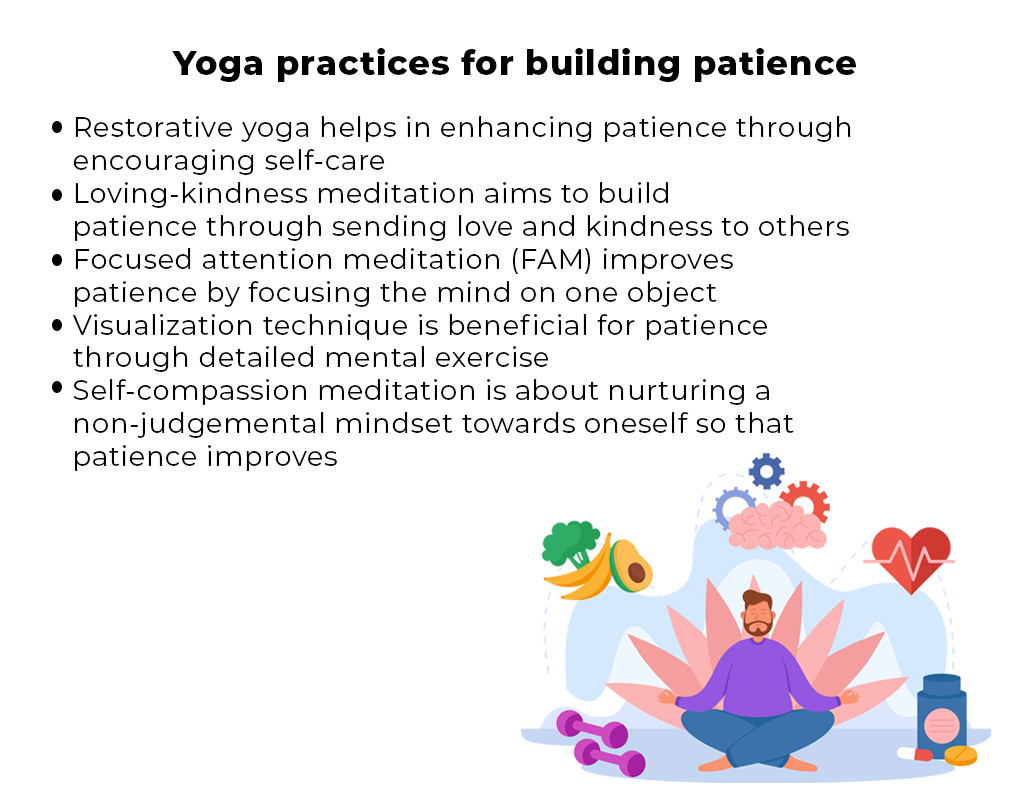How To Increase Patience Through Meditation
Patience is about having tolerance and acceptance for difficult circumstances without getting annoyed or anxious.
Frustration is the opposite of patience which means getting annoyed easily in the face of challenges and obstacles. Nowadays, we can see impatient individuals everywhere and they keep increasing with the passing time. The aftermath of impatience is irritability and stress.
“I have seen many storms in my life. Most storms have caught me by surprise, so I had to learn very quickly to exercise the art of patience and to respect the fury of nature.” – Paulo Coelho
Meditation has shown to be effective for impatience and its adverse effects; they go side by side. Moreover, with continued practice, it becomes easier for individuals to distance themselves from their unpleasant emotions.
Five Reasons to Nurture Patience Through Meditation
- Meditation helps combat mood disorders
- Builds mental toughness against pain
- Changes the brain i.e. the gray matter thickens significantly
- Improves concentration and helps reduce stress
- Helps with emotional regulation effectively
“Be patient and understanding. Life is too short to be vengeful or malicious.” – Phillips Brooks
Types of Meditation to Develop Patience

Restorative yoga meditation
Restorative yoga is about practicing healing the body, mind, and spirit slowly. Restoration is about bringing the stressed mind, body, and spirit to a calm and relaxed state. Restorative yoga helps achieve a calm state by holding the physical movements longer; it is encouraged to take the breathing practices deeper to introduce calmness in the body.
The use of supportive equipment makes the meditation unique; it helps in holding poses for a longer period of time without discomfort. Hence, restorative yoga helps develop patience in the individual.
“Do activities you’re passionate about – which make your heart and soul feel perky – including things like working out, cooking, painting, writing, yoga, hiking, walking, swimming, being in nature, being around art, or reading inspiring books.”– Karen Salmansohn
Loving-kindness Meditation
Loving-kindness meditation is a combination of physical movements and breathwork just like any other meditation. Its uniqueness is that it nurtures compassion for oneself and others through all the exercises.
Loving-kindness meditation is meant for everyone to receive love, kindness, and compassion.
Focused-attention Meditation (FAM)
Focussed attention meditation is about focusing on something consciously in order to calm the mental chatter.
The uniqueness of FA meditation is that it encourages focusing on one object (breath, thought, or anything material). Distraction is a normal aspect of meditation; it gets better with experience.
- Find an object to focus on
- Be in a relaxing pose
- Calm the inner self
- Learn from mistakes and failures
Visualization
In a visualization strategy, an individual imagines a scenario in great detail to achieve their goals. For instance, a person imagines their clothes, their behavior, the environment, their emotional state, and the behavior of the other individual. The in-depth imagination exercise helps one to practice their desired response.
An important point here is that just one session of visualization will not help reach the goal; it would take repeated sessions for the patience to grow stronger.
Self-compassion Meditation
Self-compassion meditation is about developing a non-judgemental attitude towards oneself.
According to Chris Germer, “Self-compassion involves the capacity to comfort and soothe ourselves, and to motivate ourselves with encouragement, when we suffer, fail, or feel inadequate. Self-compassion is learned in part by connecting with our innate compassion for others, and self-compassion also helps to grow and sustain our compassion for others.”
For the purpose of developing patience in oneself, self-compassion plays an important role. It is because being non-judgemental with oneself helps nurture patience for others easily.
Yoga Meditation
Yoga is about developing balance in mind, body, and spirit. It is different from other exercises as it is not about pressuring oneself to have a perfect posture and breathing routine.
There are different kinds of yoga that have different focuses and goals for the participants. For example, Kundalini yoga is suitable for people who want a holistic practice along with singing; Vinyasa yoga is harmonious for individuals who prefer more physical movement than calmness; People who are into a lot of physical movement along with spiritual elements participate in Ashtanga yoga.
“Yoga is immediately rewarding, whatever your level because it’s not about being able to attain the perfect lotus position. Each day, there is an improvement on the day before. It’s not competitive; it’s not a race. With yoga, the journey is the destination.” – Trudie Styler
Qigong Meditation
Qigong means to be in control of one’s energy. It is a meditation practice from Chinese tradition that has physical movement along with breathing exercises. Its uniqueness is that anybody can do it and there is no special setting required. For example, it can be done at parks, homes, and even a chair (for people who cannot move their legs a lot). There are several benefits of the Qigong meditation exercise:
- Improvement in balance
- Reduction in the risk of health conditions like type 2 diabetes
- Enhancement in concentration
- Minimization of stress
It is obvious that the Qigong exercise helps in reaching a calm state of mind so one can easily develop patience.
Concluding Remarks
Patience is a critical component in working towards a better world. Every day, we encounter individuals who are impatient which pushes them to make vulnerable choices. Many people believe that patience is one-time learning, but it is not the case because patience can be increased with time.
Meditation practices significantly help in nurturing patience in oneself. It does not matter which type of meditation one picks – Yoga, Loving-kindness, Focused attention, Qigong, Visualization, or any other. Meditation practices bring more advantages along with strengthening patience.